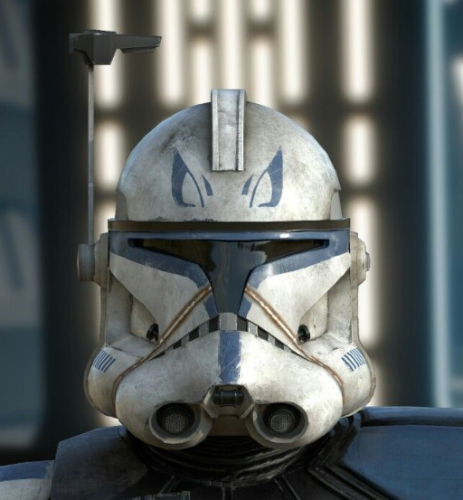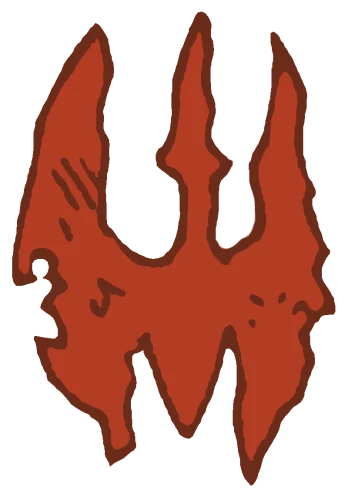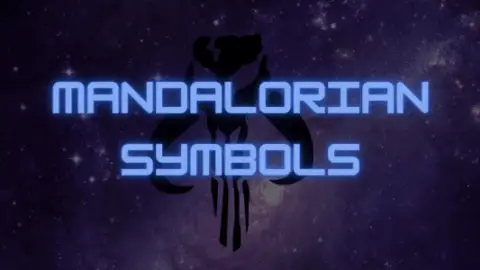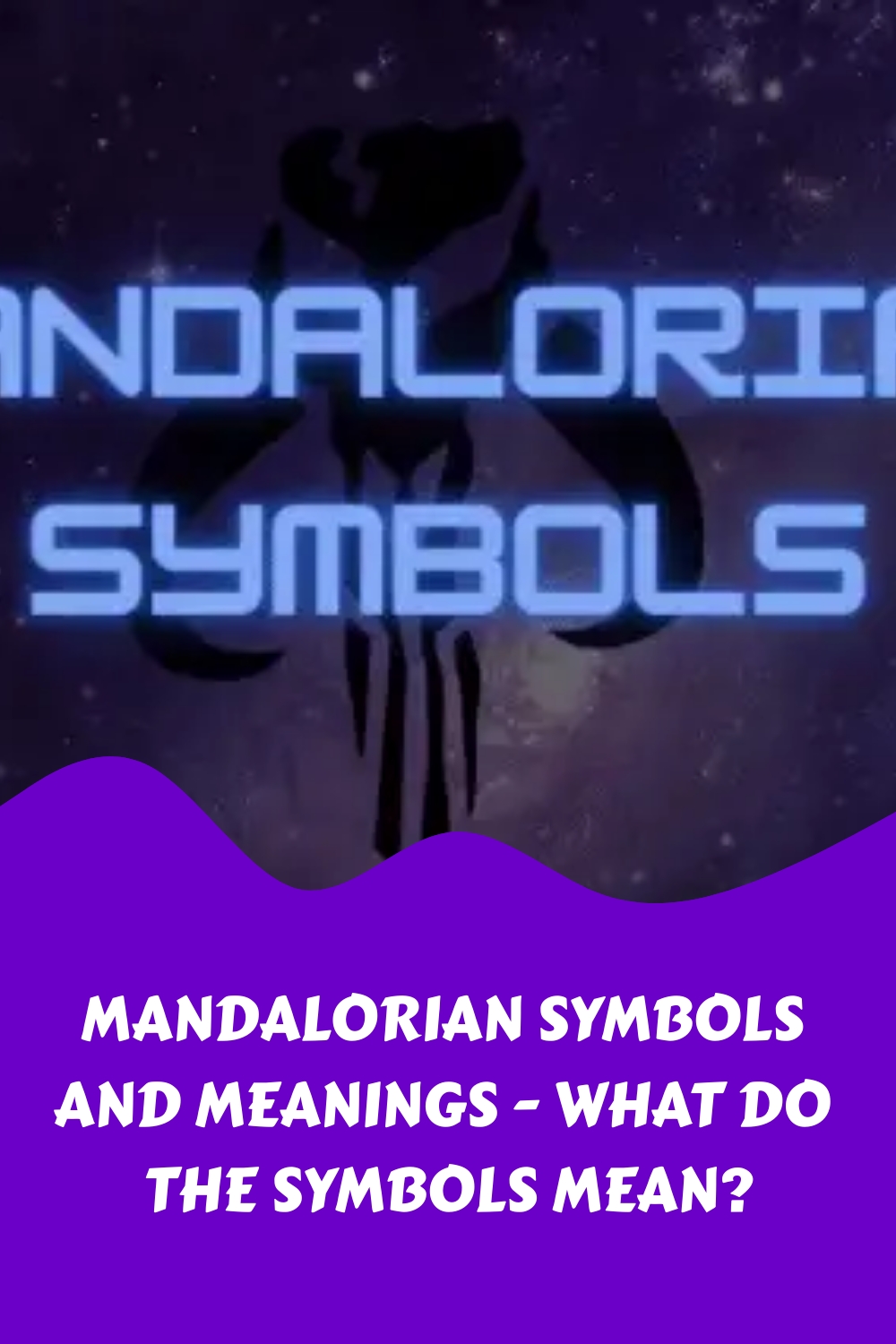Within the Star Wars universe, the Mandalorians are an ancient culture, steeped in warring tradition and culture. Much of this was developed within the pre-Disney Expanded Universe through comics and novels. Two animated series, Clone Wars and Rebels, kept alive the symbols and lore of the Mandalorians once the Disney purchase of Lucasfilm reset the timeline of the Star Wars franchise.
But there was even more to come once Disney+ at last began streaming the long-awaited “Boba Fett project,” which rose from development hell as The Mandalorian (and, soon, The Book of Boba Fett.)
With renewed interest in Mandalorians thanks to Mando and his new friend Boba, the icons of this fascinating culture are making their way to merchandise, cosplay, and laptop stickers. Let’s get to know them better. What do the Mandalorian symbols mean?
Mandalorian Crusaders

Part of the look of the Mandalorian armor—the knight-like suit, the T-cross visor—owes a great deal to medieval Europe and the Crusades. So it makes sense that the Mandalorian Crusaders draw their name from these noble soldiers.
The Mandalorian Crusaders, the first Mandalorians we know of, are the root of the historical conflict between Mandalorians and the Jedi. They were founded by Mandalore the First at least 24,000 years before the Battle of Yavin. Mandalorian Crusaders carried swords, and, it is said, sometimes rode basilisk war droids.
Much of what we know about the Mandalorian Crusaders comes from the Expanded Universe, but hints of them show up in canon as well. Cubist-style murals in the royal palace of Mandalore featuring Mandalorian Crusaders were apparent two episodes of Clone Wars. In addition, the honor code by which Din Djarin’s clan (Children of the Watch) lives is apparently based on the creed established by Mandalore the First.
According to non-canon material, The Crusaders were warlike, seeking to conquer other worlds. Combat was a religious exercise, and their weapons were consecrated. Originally, the Mandalorian Crusaders forced their ways on those they had conquered, but this rigidity was soon relaxed to allow Mandalorians to choose their way of life. These early Mandalorians, over time, developed the Canons of Honor and the Resol’nare (the Six Actions), guiding principles of Mandalorian culture and life.
The circle symbol of the Mandalorian Crusaders is similar to Christ’s Crown of Thorns from Christian culture, a direct line to the real-life, original Crusaders. Within the Star Wars universe, the jagged, sharp edges of the serpent-like circle bring to mind the spikes and horn-bearing designs of early Mandalorian armor. The points of the ring stand for the Mandalorians’ weapons; the circle is meant to represent cycles of power and war, as well as the responsibility of new generations to perpetuate Mandalorian tradition.
The Mythosaur

The Mythosaur logo is perhaps the most recognizable icon from The Mandalorian. It is prominently featured over the forge entrance in the underground home of the Children of the Watch, and Kuill name-drops “the great Mythosaur” in Episode One. At the end of Season One, we see Grogu clutching Din Djarin’s own Mythosaur pendant.
Legend has it that Mythosaurs once roamed the planet of Mandalor and that early ruler Mand’alor the First charged early settlers with hunting them. An early form of the Mythosaur skull began to appear superimposed over the Crusader barbed circle.
Within the Star Wars universe, this icon began showing up in comic books as early as 1977 and made its most famous appearance on Boba Fett’s shoulder plate. The symbol appeared in video games.
Jaster Mareel’s Sigil: The Emblem on Boba Fett’s Chest

You’ve probably spotted the unusual symbol emblazoned on Boba Fett’s chest plate—an abstract shape in yellow, red, and green that stands apart from the jagged Mythosaur skull or the famed T-cross visor. But what does this emblem actually represent, and why does Boba wear it with such pride?
This chest symbol is known as Jaster Mareel’s sigil, and it carries a story of legacy, loyalty, and survival that runs deep through Mandalorian history. Long before Boba donned his father’s armor, the sigil belonged to Jaster Mareel: legendary Mandalorian leader, mentor, and a figure who forever shaped the Fett family’s destiny.
A Symbol Forged in Tragedy and Honor
Jaster Mareel hailed from Concord Dawn, an agricultural world on the Outer Rim, and served as a Journeyman Protector—a local guardian with an ironclad sense of justice. When young Jango Fett lost his parents in a brutal raid by Death Watch, Mareel stepped in, adopting Jango and teaching him the Mandalorian ways: discipline, combat, and the code of honor.
’s influence marked Jango for life, and in turn, the sigil he wore became a badge of gratitude, family, and identity. Jango carried Mareel’s teachings (and his insignia) across the galaxy, etched on the armor he would eventually pass down to Boba—a legacy worn like a second skin.
Breaking Down the Symbol
As with many Mandalorian icons, the elements of Jaster Mareel’s sigil are a blend of history and hope:
- The yellow wheat stalk over a green field is a nod to Concord Dawn’s farming tradition—a reminder of home and roots, even in a harsh galaxy.
- The red drop honors the sacrifices and battles faced by the Mandalorians, representing the courage to persevere and remember those lost.
- Triangles pointing downward echo the rank insignia of the Journeyman Protectors, paying homage to Mareel’s and Jango’s first calling as defenders before warriors.
When worn together, these shapes aren’t just decorative—they form a mosaic of duty, resilience, and hard-won kinship.
The Legacy Carried Forward
After Jango’s death at the start of the Clone Wars, Boba inherited both his father’s armor and the symbolic weight that came with it. For Boba Fett, Mareel’s sigil isn’t just a patch or an heirloom—it’s a daily reminder of all he’s lost and all he’s sworn to protect. Each time Boba steps into battle, this emblem sits over his heart, binding him to the Mandalorian tradition—and to a legacy that never truly dies.
The Mudhorn Signet
Among the parade of symbols adorning Mandalorian armor, few are as personally earned as the Mudhorn signet—worn by Din Djarin (“Mando” himself), and known to fans as the crest of Clan Mudhorn. Its beginnings are rooted in both trial and triumph.
The Mudhorn entered Mandalorian lore not as an ancient beast, but as a rite of passage. In the earliest episodes of The Mandalorian, Din Djarin is tasked with slaying a solitary, rampaging mudhorn to claim a vital piece of beskar armor. The battle is grim: battered and outmatched, Djarin survives only through the unexpected intervention of Grogu, who reveals his connection to the Force by levitating the creature at a critical moment. The partnership forged in this desperate encounter gives rise to both clan and crest.
Symbolism and Legacy
The Mudhorn signet that follows comes to symbolize more than a victorious hunt. It marks the creation of Clan Mudhorn—a family built not by blood, but by shared struggle and loyalty between Mando and Grogu. In true Mandalorian tradition, symbols are more than decoration; they are declarations of honor, kinship, and survival. For Din Djarin, the Mudhorn emblazoned upon his pauldron serves as both a badge of triumph and a visual record of Grogu’s pivotal act.
This icon, now sewn into the tapestry of Mandalorian culture, represents a bridge between the old ways and a new era. Just as earlier Mandalorian signs spoke of history, conquest, and cycles of war, the Mudhorn signet stands for chosen family, the bonds of clan, and the enduring power of unlikely alliances.
Jaig Eyes

Fans of Clone Wars are familiar with the modified Jaig Eyes (jai’galaar’la sur’haii’se in the language of the Madalorians) painted on Captain Rex’s helmet—one of the best examples of cultural cross-influences in the Star Wars universe. In Rebels, Kanan Jarrus also wore Jaig Eyes on his face shield after he was blinded. Since non-canon background information suggests that Mandalorians were involved in Clone training, fans explain Rex’s helmet decoration as a gift from a mentor.
The Origin and Meaning of Jaig Eyes
The Jaig Eyes symbol has its roots in the clone army of the Galactic Republic, tracing back to Jango Fett—the Mandalorian template for all clone soldiers. Traditionally, Jaig Eyes were awarded to clone troopers who demonstrated exceptional bravery and valor in battle. Unlike mass-produced armor or standard-issue gear, the Jaig Eyes were an honor earned by only a select few. Captain Rex, who fought alongside Anakin Skywalker and Ahsoka Tano, was among those who received this rare distinction.
Kanan Jarrus and the Passing of a Tradition
Star Wars Rebels introduced a new bearer of the Jaig Eyes: Kanan Jarrus. After being blinded, Kanan wore the sigil on his face shield—a meaningful nod to both his courage and the legacy of Mandalorian symbolism. The specifics of how Kanan received the Jaig Eyes remain a mystery, but the parallel with Rex is striking. Rex, bred for battle and shaped by war, earned his through combat prowess. Kanan, a former Padawan turned rebel, overcame hardship and defeat not by design, but by choice and resilience. Both stories underscore the Jaig Eyes as a symbol of perseverance and hard-won honor, transcending origin or training.
The Jaig Eyes, whether painted on a helmet or a face shield, serve as a subtle thread connecting warriors across generations—Mandalorian, clone, or Jedi—carrying forward the legacy of courage in the Star Wars galaxy.
The Mandalorian term translates to “shriek-hawk eyes” and refers to a native hawk of Mandalore and other planets of the Outer Rim. The mark is colloquially referred to as “Jaig.” This helmet sigil, or sign, was granted by Mandalorian clan leaders as an honor, conferred for bravery in battle.
Like, many of Dave Filoni’s productions, the Jaig’s off-screen origins are rooted in early Star Wars designs. Initial prototypes for Boba Fett’s helmet in The Empire Strikes Back carry Jaig-like marks. They were also mentioned in a 2006 issue of Star Wars Insider.
Death Watch/Clan Vizla

Sharp-eyed fans of The Mandalorian who were also familiar with Clone Wars and Rebels were stunned to see a distinctive symbol on the armor of a Mandalorian who rescued a young Din Djarin during the Clone Wars. It was the sigil of Death Watch, a separatist group that joined with Darth Maul to depose the pacifist government of Duchess Satine Kryze.
Although Din has not been seen wearing the sigil himself, fans were unsettled to consider the possibility that this stylized shriek-hawk suggested that he was influenced by the ways of Death Watch. The title of his clan, Children of the Watch, hints that it’s a splinter of the original group, which broke apart after Darth Maul came to power in Mandalore.
The Death Watch symbol was adapted from Clan Vizla’s family sigil. This came about when Pre Vizsla became its leader; he was eager to reinstate Mandalore’s warlike ways. For a time, Pre Vizsla held the Darksaber, a Jedi-Mandalorian weapon, before it was claimed from him by Darth Maul. The Darksaber played a significant role in the Season 2 finale of The Mandalorian and the child.
Over time, the Death Watch symbol has carried both red and blue shadings. It appeared in a simple white shade in The Mandalorian.
The Death Watch symbol is often mentioned in conversation with a sigil Kanan Jarrus wore on his shoulder. The shape is similar but not explained in canon. Some explain it as a variant of Sabine Wren’s Starbird logo or connect it to ancient Jedi symbols.
The Clan Eldar Symbol

For dedicated Mandalorian fans, the crest of Clan Eldar is a fascinating example of how Star Wars visual language reflects deeper cultural currents. This emblem, which features a cunning fox or wolf-like creature, stands apart from Mythosaur skulls and shriek-hawks, yet still feels at home among the storied houses of Mandalore.
The creature at the heart of the Clan Eldar sigil embodies traits highly prized by Mandalorians: strength under pressure, cleverness in adversity, and an unwavering spirit. Its stylized depiction pays tribute not only to the clan’s identity, but also to the enduring traditions of Mandalore’s warrior past.
Color symbolism weaves further meaning into the design. The green in the symbol often evokes themes of renewal and survival—a nod to the clan’s ability to persist against overwhelming odds, particularly in the shadow of the Great Purge. Orange, meanwhile, may honor the memory of those fallen in battle—a subtle but poignant tribute highlighted in the armor of the clan’s warriors.
Like many Mandalorian sigils, the Clan Eldar crest is more than mere ornamentation. It marks survivors, fighters, and those who carry the torch of Mandalore into uncertain futures. As with the now-iconic Jaig Eyes or Death Watch’s shriek-hawk, every flourish tells a story—one of resilience, unity, and honor.



